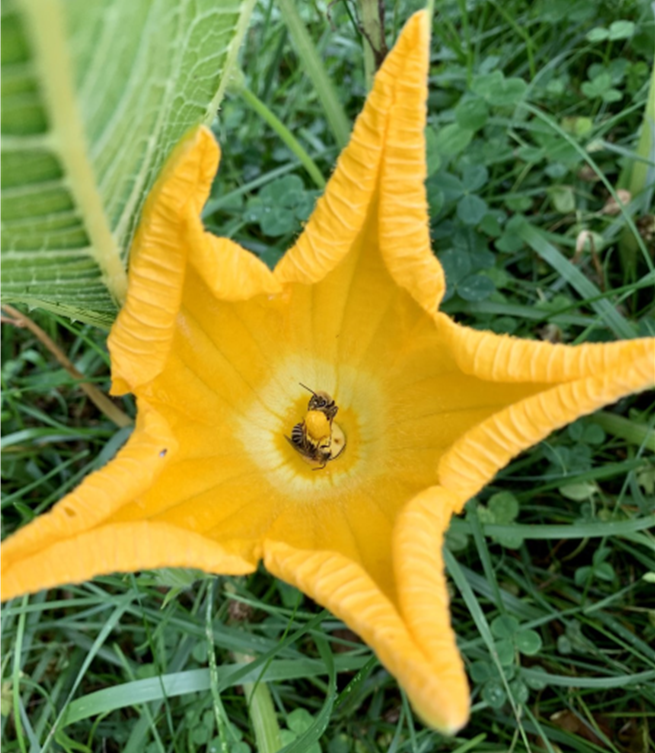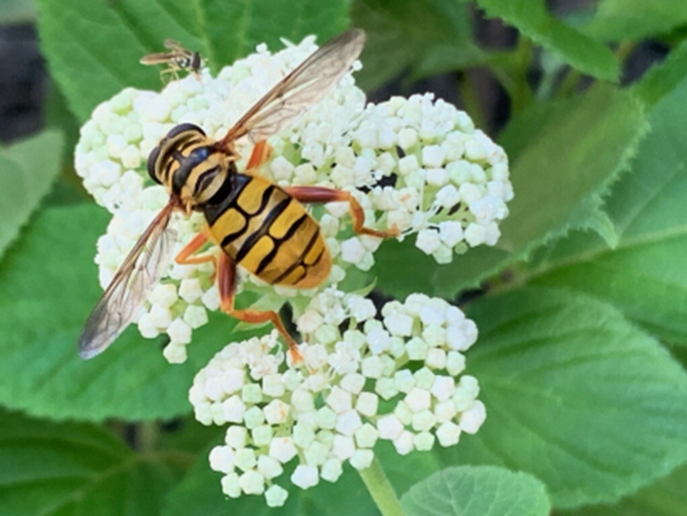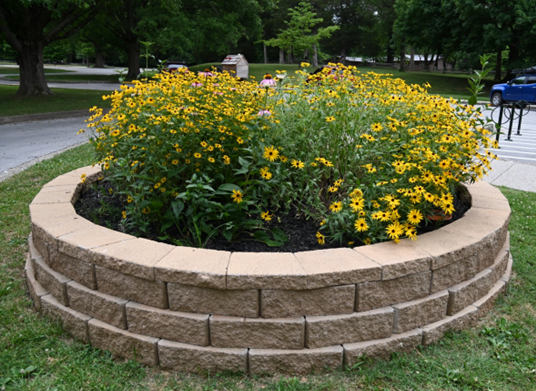Bees, butterflies, hummingbirds, beetles, hoverflies, wasps, ants, moths, other birds, and even some bats work hard to provide our community with important pollinator services.
NPS Photo, Jessica Parrish PastIf you could time-travel to Abraham Lincoln's time in Kentucky, over two-hundred years ago, Kentucky was painted with colorful fields of tall flowers and grass that rippled in the soft breeze. Butterflies, hummingbirds, and bees danced from flower to flower, collecting pollen and nectar, and the air was rich with the sweet smell of nectar. Plants, animals, and Indigenous People lived as they had for thousands of years. Pollinators provided bountiful harvests and made possible materials for building and clothing. They kept the air, rivers, forest, and soil healthy. Lincoln's family relied on subsistence farming. This was made possible by the hard work of not only Thomas Lincoln, but also pollinators. Through pollination, these animals turned the pumpkin flowers into the fruit that Abraham Lincoln recalled planting on the Knob Creek Farm, which you can now visit as a part of this National Historical Park. If you visit in the growing season, you might even see pollinators at work as the pumpkins in our living history farm grow. 
NPS Photo PresentKentuckians still rely on these pollinators to produce the food we eat each day. Approximately 12,900,000 acres of land in Kentucky are operated as farmland each year. These pollinator species provide 1 out of every 3 bites of food that we eat. As you drive to the park, the landscape is covered in farmhouses with lavish home gardens as people continue to grow their own food, rather than subsistence farming to survive, these gardens are often grown as a way to connect with nature.Currently, 40% of invertebrate pollinator species are facing extinction and 16% of vertebrate pollinators are under threat due to human activity, habitat loss, and climate change. Many of the meadows and wild lands have given way to houses, highways, roads, infrastructure, factories, and parking lots. Pesticides, introduced diseases, and invasive species threaten many of our pollinators and the environments they rely on. The American people have set aside lands for parks and green areas across the United States, 12% of the recommended 30% of land is currently preserved as natural space. 
NPS Photo FutureBalcony gardens, hanging plants, growing prized tomato plants, and people's love of flowers is not likely to change anytime soon. By working together, we can ensure that butterflies, birds, bees, and other pollinators have the space and resources to survive and thrive, we and future generations can help safeguard clean air, clean water, bountiful harvests, and beautiful flora and fauna for today and tomorrow’s generations.

More about Pollinators
Learn more about pollinators, and the ways that you can help them. 
Butterflies
Learn about the butterflies at the Abraham Lincoln Birthplace. |
Last updated: December 17, 2022
